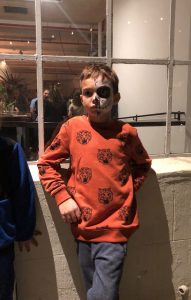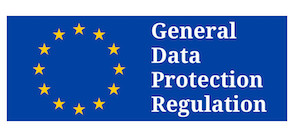The most frequently searched terms that are finding this site are now CBD, ADHD and Autism. And I have more than a few emails I need to return asking the same (I haven’t forgotten you, mamas - I’m actually writing this just for YOU). Could CBD also help with my child’s anxiety, sleep disorder, sensory processing disorder, Lyme disease, depression, traumatic brain injury, Tourette syndrome, tics, PANDAS . . . ?
My standard reply, based on my observations is this: Maybe?
My son has a few diagnosis’s I’ve been okay with applying since that is how we get our much needed services. But I know Robby to be Robby. He’s a true individual. While I won’t get into the details for the sake of his privacy, suffice to say, it would help us both out A LOT if the daily dose of high CBD he takes to control his seizures also chilled him out. In any way. But it does NOT. Instead, I’ve actually wondered if it increases certain trying symptoms. And I’ve heard this stated by other moms too - especially those coping with autism, anxiety and sensory processing.
But don’t get discouraged! For every mom who says it is not helping, I’ve heard just as many say that it IS improving symptoms. You won’t know how your child responds until you try.
We all want high CBD to be the answer - it has a gentler list of potential side effects than pharmaceuticals, is nonpsychoactive, a neuroprotectant, readily available (even in states without a medical marijuana program), etc. - but it often isn’t. And then again, it often is.
While there are some trends in responses (i.e. THC can reduce pain, “sativa” can be energizing/”indica” can be relaxing, high CBD can decrease seizures), your personal relationship with cannabis will be your own. Your response and how you use it can be as individual as you are. And the “right way” to use cannabis will always be the way that works for you. It often takes some tinkering to learn what that is and I observe the families willing to do that to be the most successful. (This may not be the best medicine for those who don’t feel comfortable doing so or who want instant results.)
I think it helps to have realistic expectations before trying high CBD and, if you don’t like it, KNOW THAT YOU MAY HAVE OTHER OPTIONS. Moves I see parents make if high CBD doesn’t do what they’d hoped is:
- Try another high CBD. The difference between products could be the strain of cannabis and terpene profile, extraction method, carrier oil or ratio of CBD to THC (notated as “CBD:THC”). Many children respond better with a smidge more THC and some companies that mail into all states carry these products. So instead of an oil, lets say, with a ratio of 25:1 CBD:THC, you may want to try a 15:1 or 10:1. I have a list of companies selling different ratios of high CBD on my resource page (but you’ll have to reach out them to see what their current menu options are). Your state does not need to have a medical marijuana program to have access to these products. But if having legal protection at the state level is important to you, you’ll want to participate in your state’s medical marijuana program.
- Try THCA. My friends with children with autism often find better success with THCA (but not always). When parent expert, advocate and overall powerhouse Jae Meadler came and spoke to our support group, she shared that if seizure control isn’t a factor, she often finds THCA to be an effective place to start before adding CBD. THCA is also nonpsychoactive like high CBD, but because it is the acid form of THC, you would need to be in a state with a medical marijuna program to have legal access.
- Try THC. Understandably, high THC products are typically a last resort. Red flags that it may be indicated are when chronic pain, sleep disorders and violent/self injurious behaviors are involved. Families using THC oils often manage it’s potency by: microdosing 1mg at a time, titrating up slowly, using a ratio that is equal parts THCA or CBD (called a “1:1” CBD:THC or THCA:THC), and dosing at bedtime. You would need to be in a state with a medical marijuna program to have legal access.
I have a real life example of how this can play out. A family friend who has a 5 year old child with autism strategized treatment planning the way a lot of parents I speak with do. This was their approach and experience:
1. tried high CBD - increased symptoms
2. tried THCA - increased symptoms
3. tried 1:1 THCA:THC - decreased symptoms
They started with 2mg of each THCA and THC at bedtime. Their kid not only began sleeping through the night, but also had significantly reduced symptoms the next day. With just that smidge at bedtime. I truthfully wouldn’t have expected that outcome from such a small dose. I LOVE that I am still continually surprised by the different ways cannabis works for each of us.
Your child’s individual symptoms will inform which makes sense as a starting point, and it may not be high CBD. So it helps to get clear about the options available to you before making a choice. Sources of education to inform treatment planning can include:
- orientation classes through The Realm of Caring,
- the resources provided by the specific company you purchased your product from,
- OTHER PIONEERING PARENTS (preferably in your community so you can share high-quality local resources, which is especially important when THC products are involved),
- parent experts like Ray Mirzabegian on the West Coast and Jae Maedler on the East Coast,
- Dr. Bonni Goldstein’s book, Cannabis Revealed,
- and the “Resource” and “Safely Starting Your Child On Cannabis” pages of this website.
I really, really, REALLY wish I could tell you that, “Yes! High CBD will eliminate all the undesirable symptoms your child suffers from!” Except that is not true . . . and sometimes it is . . .





Bookmarking this one.
Thank you for the work, research and sharing you provide.